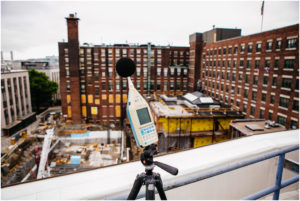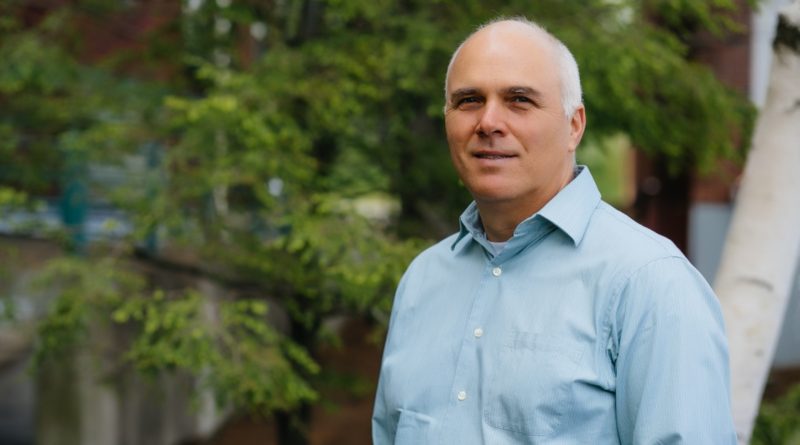Q&A: Architectural Acoustics Specialists Acentech Are of ‘Sound Mind’
BOSTON — Headquartered in Boston, Acentech provides consulting services in architectural acoustics, audiovisual design, noise and vibration control, security systems, and information technology design. They also do a great deal of work on academic campuses. We spoke with president Jeffrey Zapfe about “being of sound mind.”
Q: How did Acentech decide to move into this particular niche? It’s such an obvious problem, and yet it seems like there are few companies that tackle it. What’s the backstory?
Zapfe: Institutions have always had an interest in protecting their stakeholders from construction vibration and noise. Prior to the Internet, monitoring systems were largely historical records of what happened. But with the arrival of the Internet and with the advent of reliable “remote desktop” applications, it became possible to collect, process and communicate data in real time. Our first remote monitoring project started more than 10 years ago. By our current standards it was pretty basic — we essentially logged onto a remote PC that was running a commercial data acquisition system. We could see the data in real time, but we had no alarm capability. That first project, however, showed us the great benefit that monitoring could provide to our clients. Since then our systems have grown in terms of both measurement and communication capability. One of our clients summed up the value of monitoring as “peace of mind.” When she wasn’t getting alarms, she knew everything was okay.
Q:When beginning construction on an occupied campus, how has sound pollution been handled in the past — or has it? What unique strategies does Acentech deploy?
Zapfe: Typically, before remote monitoring technology, a construction noise study would begin with a model to determine what areas, if any, are likely to be impacted. These models take into account the type of equipment to be used as well as topography and building structures (buildings can shield other buildings from sound). Once the potential impacts are understood, mitigation strategies can be employed. These can range from temporary noise walls to additional glazing on windows, to moving sensitive receivers to another location.

Once the construction began, monitors would be installed to measure the noise. But these monitors were only historical records; they did not provide data in real time unless someone was there to observe the output directly. If real-time information was needed, it invariably involved a live person with a sound level meter.
The arrival of computers and modem technology did provide real-time capability, but these systems were cumbersome to use and the data rates were very limited. The high-speed Internet and Wi-Fi technology exploded the possibilities for noise monitoring systems. Increased data rates and web access pages make it possible to transfer large amounts of data and to share it widely.
Today, Acentech uses a technology called Remote Monitoring where systems are deployed in sensitive facilities near construction sites and stream data in real time over the Internet. These are not traditional vibration monitors that are used to protect buildings from damage — our systems measure vibrations that are much smaller and can affect a sensitive piece of equipment or sensitive activity inside a building. The measured data is extremely important, and provides managers, administrators, researchers and construction personnel with vibration and noise information in real time, enabling them to anticipate problems in critical situations, implement mitigating actions, document problematic events and account for the effects of such events on research.
Q: Vibrations can be disruptive, and in California (where they are often mistaken for earthquakes), how can they be mitigated?
Zapfe: In many cases, there are lower vibration options for construction (vibratory versus impact pile driving, hoe-ramming versus blasting, etc.). But generally, lower vibration methods take more time and are usually more expensive. The balance between project cost and disruption to neighboring adjacencies is an important issue that needs to be carefully considered. Ultimately, however, the construction has to take place and, at some time, someone is likely going to be affected by the vibration and noise. Here, communication is key. If users know when the disruptive activity is going to take place, they can generally work around it. The one thing that people hate is being surprised. Letting people know early on what they can expect from the project and keeping them in the loop during the project can make the experience much more tolerable.
Q: Acentech recently worked with the New England Conservatory — what was the nature of the project?
Zapfe: Preserving the use of rehearsal and performance spaces of a music school less than 10 feet from a large-scale demolition between Northeastern University and the New England Conservatory. The construction of a new 17-story residence hall on the campus of Northeastern University involved knocking down part of the YMCA facility on Huntington Avenue. Since the New England Conservatory is an abutter to the site — at a distance of 18 inches at its closest point — the demolition raised concerns for the conservatory, which houses sensitive spaces including music instruction rooms, recording studios and performance space in Brown Hall, Williams Hall and Jordan Hall.
To help protect performance and student use of the conservatory from airborne and structurally radiated noise intrusions, Acentech worked with the conservatory and the developer to establish construction-related noise and vibration thresholds. Acentech installed real-time monitoring systems, which provide live feedback and alerts to the construction superintendent and conservatory, notifying of a breach in predetermined noise or vibration levels. Acentech placed its monitoring systems at five noise sensor positions on the roof and two vibration sensor positions on the foundation of the conservatory building directly below critical listening and performance spaces. The real-time monitoring systems have allowed construction to continue and the conservatory to operate in a compatible and cooperative manner.

